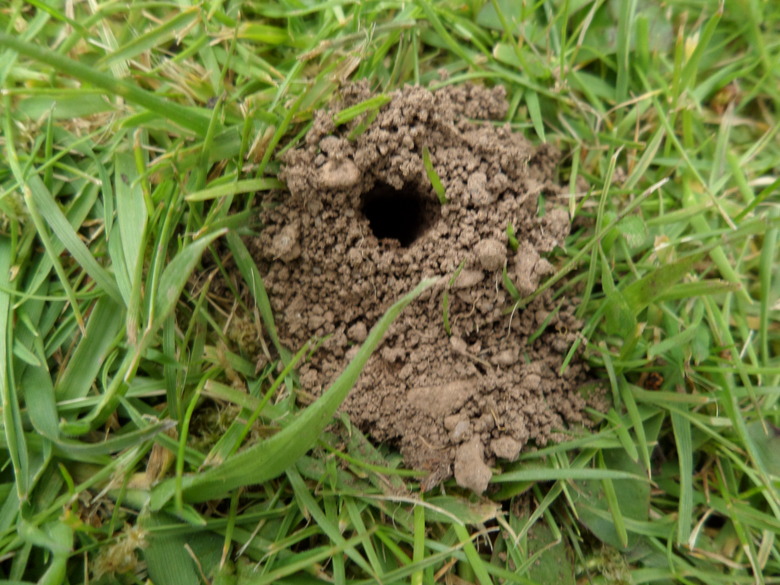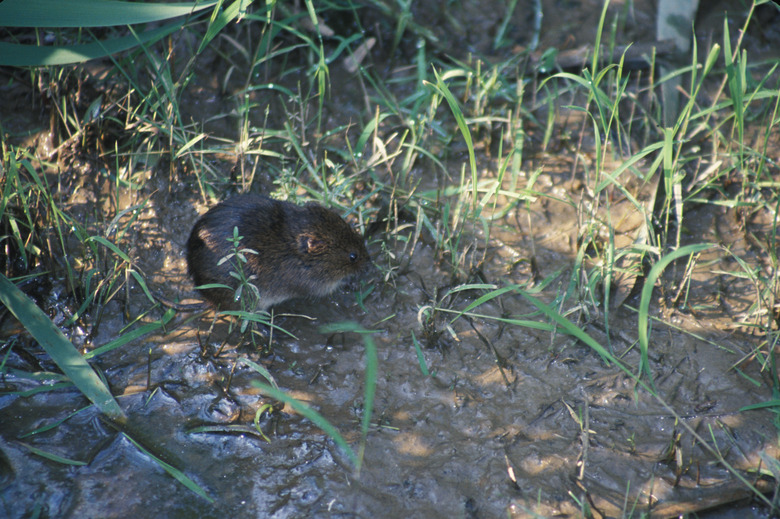How To Fill Holes In The Lawn With Soil
Lawns require regular maintenance to look good, and sometimes lawn care requires major repair when large areas are damaged. If you have holes in your lawn, first determine the cause, which could be environmental—too wet or too dry weather, for instance—or due to critters, such as small rodents or gophers digging holes.
If you have lawn diggers like these, determine a way to control them, or you will be continually filling and repairing holes and bare spots.
What’s Causing the Holes?
Bare spots in your lawn can be due to poor soil conditions, but actual holes are likely to be critter related.
Environmental Conditions
If your soil is heavy clay or the area is well-trodden and has to withstand a lot of foot traffic, the soil is likely compacted. In this case, water and fertilizer cannot reach the grass roots, and they will die, creating dead patches.
Heavy rain can wash away soil, creating holes and bare ground. Bare ground, in turn, invites weeds and more damage.
Critter Activity
Sometimes it's clear that critters are damaging your lawn. These lawn pests are usually creating burrows or seeking food. If you can determine the cause, you can research the best pest control strategy or repellent to prevent lawn damage in the future.
**Insects:** Small holes are generally due to insects such as cicada killer wasps, scoliid wasps or June beetles, which leave holes about the size of a nickel. Cicada killers are fascinating wasps that hunt cicadas and drag them down into deep tunnels to feed their young.
Certain types of bees live in the ground, where they dig tunnels to lay eggs; these are usually accompanied by a small mound of soil next to the hole.
**Earthworms:** Earthworm activity, on the other hand, usually leaves no visible holes or very tiny holes, but you might notice a 1-inch high mound of dirt or castings.
**Moles, Voles, Chipmunks and Squirrels:** More prominent holes or mounds of dirt can be mole holes or the result of voles, chipmunks or squirrels. Moles create volcano-shaped hills that flatten and create a bare spot over time.
Vole holes are small, only about 1 inch in diameter, while chipmunk tunnels are about 2 inches in diameter.
Squirrels leave a similar-sized hole as chipmunks, but their holes are not burrows; they are places where squirrels bury goodies such as nuts for later nourishment.
**Skunks, Raccoons and Groundhogs:** Large holes are usually due to skunks, raccoons or groundhogs. Skunks and raccoons skulk around at night, digging holes while seeking grubs or other delectable insects. These holes are generally 3 inches or larger in diameter.
Among the largest holes created by animals are those from groundhogs, a major pest in gardens. Their burrow entrances are 10 to 12 inches in diameter.
Filling the Holes
Whatever the size of the hole, you want to fill it and repair the lawn in that area. If the area contains compacted soil, you'll need to add a lot of organic matter to ensure better drainage and soil health.
Large Holes
If a hole is deep, perhaps from construction or excavation activity like stump removal, partially fill it with gravel, wood chips, or another similar material to within 4 inches from the surface, rather than purchasing large quantities of soil.
When using wood chips, don't exceed a 25 percent wood chips to 75 percent soil ratio. For the top-most level, use a higher quality soil high in organic matter.
Warning
Don't use a high volume of sand as fill, as sand + clay = concrete. Lawns require good drainage.
Small to Medium Holes or Bare Patches
The key to a healthy lawn is soil high in organic matter. If you have a compacted, bare area or shallow holes, first soften the soil by digging it down at least 6 inches—or more if it's clayish and very hard—and adding high-quality compost mixed with topsoil, which can be purchased at a garden center. Mix the amendments in thoroughly.
Tip
If the area is large, you may want to prepare it for laying sod rather than overseeding.
Smooth the area with a rake, and then wait a few days for the soil to settle. Add more topsoil if the area has settled into a depression, and smooth that over again with a rake. Your goal is to end up with a smooth area of bare soil at the same level as your existing lawn.
Now you're ready to reseed.
Reseeding the Lawn
Choose grass seed appropriate for your area, either a cool-season seed or a warm-season seed. Check with your local university extension office for recommendations. If the repaired area is large, use a seed spreader to ensure even coverage.
After seeding, water twice daily—unless it rains—until the grass is established to ensure the seed doesn't dry out. When the new grass blades are 2 to 3 inches tall, begin to mow.
You don't want new grass to get too tall because various seeds germinate at different rates, and some faster-germinating seeds can shade out the slower-germinating seeds.
References
- University of Florida IFAS Extension: Help for Holes, Bare Spots and Soil Erosion After Hurricane Michael
- Clemson University: Holes in the Lawn
- NC Cooperative Extension: What's Making This Hole in My Yard?
- University of Nebraska Lincoln: Soil Amendment for Lawns and Landscapes
- LSU College of Agriculture: Use Sod for Quick Repair of Damaged Lawns

